About ActiveCare Physical Therapy®
The Best Physical Therapists in NYC
-
Our therapists are licensed in New York State and active members in the American Physical Therapy Association. We have advanced training in joint mobilization and myofascial release techniques.
-
We are dedicated practitioners with a passion for the profession and a comprehensive, holistic approach to treatment and healing. We treat each patient as an individual and treat the whole person, with a plan of care designed to meet the patient’s set goals for health, functionality and a return to work, tasks and activities. We network with a team of physicians, chiropractors, acupuncturists and massage therapists in order to provide guidance to other modalities that may be effective in the patients’ care. We also offer superior Telehealth services for physical therapy.
-
Physical Therapist and owner Dr. Karena Wu PT, DPT, OCS is a graduate of the Program in Physical Therapy at Columbia University and is affiliated with several healthcare organizations in New York City. She is certified as a Strength and Conditioning Specialist, Kinesio Taping Practitioner and Pilates Instructor, and uses SpiderTech Taping. She is also a Certified Orthopedic Manual Therapist, Strength and Conditioning Specialist, Graston Technique® Specialist and Pilates Instructor. She holds LSVT BIG, FMS and SFMA Level 1 certifications as well. Dr. Wu also specializes in vertigo and temporomandibular joint disorders.
-
ActiveCare is primarily an out-of-network facility. We accept all insurance with out-of-network benefits and file for most major insurance plans. We work with all prospective patients to create workable payment plans regardless of insurance coverage.
-
ActiveCare accepts Medicare, No-Fault and Workers’ Compensation patients depending on schedule availability.
-
ActiveCare’s administrators provide seamless and efficient concierge-style client service to all of our patients. And the whole ActiveCare team makes sure your time with us is a beneficial, productive and enjoyable experience.
Quick Links
Manual Therapy Bursitis Plantar Fascitis Meniscus Tears Labral Tears Kinesiology Taping Pilates Rehab
Visit Our Main Website:
www.ActiveCarePhysicalTherapy.com
Blog Posts Are Below:
* We Accept Medicare | No Fault | Workers Comp *
Category Archives: Rehabilitation PT
The Role of Physical Therapy in Post-Surgical Rehabilitation
What is the role of physical therapy in post-surgical rehabilitation? Physical therapy plays a critical role in the healing process after surgery. Whether you’ve had joint replacement, ligament repair, spinal surgery, or a soft tissue procedure, post-surgical physical therapy is essential for restoring strength, mobility, and function. It not only helps speed up recovery but also reduces the risk of complications and long-term impairment.
In this article, we’ll explore how physical therapy supports post-surgical recovery, what the rehabilitation process typically involves, and why it’s a vital step for optimal healing.
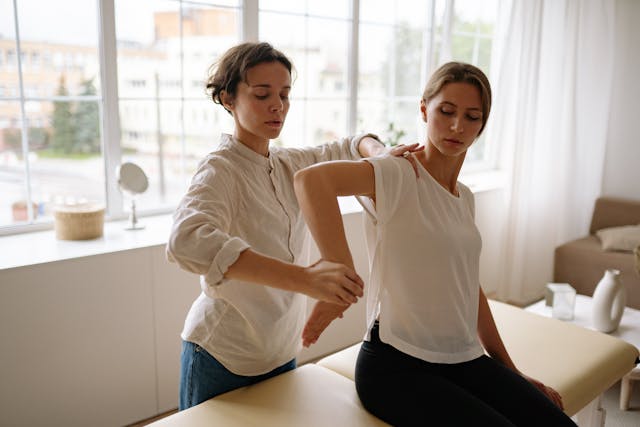
Why Physical Therapy Matters After Surgery
Post-surgical physical therapy rehabilitation is more than just exercise. It is a carefully structured program designed to:
- Restore Mobility: Surgery often leads to joint stiffness or limited movement. Physical therapy helps regain a normal range of motion.
- Build Strength: Muscle weakness is common after surgery due to immobilization and limited activity. Targeted exercises rebuild muscle strength safely.
- Control Pain and Swelling: Manual therapy, movement, and modalities like ice and electrical stimulation can help manage post-operative pain and reduce inflammation.
- Improve Circulation: Movement promotes better blood flow, which aids healing and reduces the risk of complications like blood clots.
- Prevent Scar Tissue Adhesions: Guided mobility exercises minimize scar tissue buildup that can limit flexibility and joint function.
The Post-Surgical Physical Therapy Process
Physical therapy begins at different stages depending on the type of surgery and the surgeon’s protocol. The rehabilitation process typically follows three main phases:
1. Early Recovery Phase
In this phase, the focus is on protecting the surgical site, managing pain and swelling, and beginning gentle range-of-motion exercises. Therapists may also introduce light isometric exercises to prevent muscle atrophy.
2. Strengthening Phase
As healing progresses, the emphasis shifts to regaining strength, improving flexibility, and restoring joint mobility. Physical therapists carefully guide patients through exercises that progressively increase in intensity, while continuously monitoring pain and swelling.
3. Functional Training Phase
The final stage focuses on helping patients return to daily activities, sports, or work-specific tasks. Therapists incorporate functional exercises that simulate real-life movements to ensure patients regain the confidence and ability to resume their normal routine safely.
Common Post-Surgical Conditions Requiring Physical Therapy
Physical therapy is a key component of recovery for many surgical procedures, including:
- Knee replacements and ACL reconstructions
- Hip replacements
- Spinal surgeries, such as laminectomy or discectomy
- Shoulder repairs, including rotator cuff or labral tears
- Foot and ankle surgeries
- Post-abdominal or pelvic surgeries requiring core and mobility rehabilitation
The Benefits of Early Physical Therapy
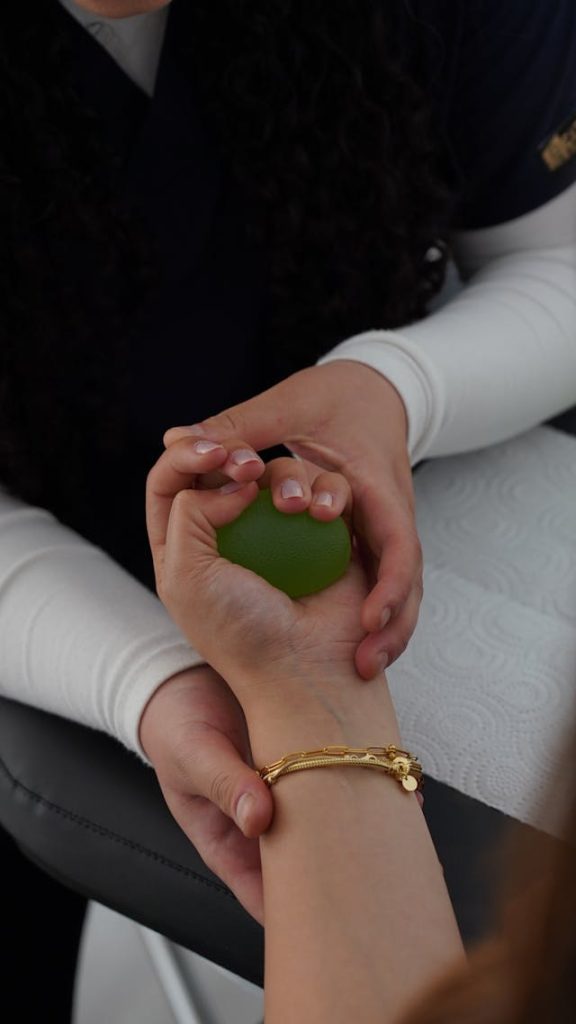 Starting physical therapy soon after surgery—when appropriate—can accelerate recovery and prevent complications. Benefits of early intervention include:
Starting physical therapy soon after surgery—when appropriate—can accelerate recovery and prevent complications. Benefits of early intervention include:
Faster Return to Activity
Early movement helps patients regain functional independence sooner.
Reduced Scar Tissue Formation
Guided motion reduces the risk of adhesions that can limit joint mobility.
Improved Long-Term Outcomes
Structured rehabilitation supports proper joint mechanics and muscle balance, reducing the chance of chronic pain or re-injury.
Patient Education and Long-Term Success
An essential part of post-surgical physical therapy is education. Therapists teach patients how to:
- Protect the surgical site during daily activities
- Use assistive devices like crutches, walkers, or braces correctly
- Perform home exercises safely and effectively
- Recognize warning signs that require medical attention
Educated, engaged patients typically experience better outcomes because they understand how to actively participate in their own recovery.
Physical Therapy in Post-Surgical Rehabilitation: Conclusion
Physical therapy is a vital part of the post-surgical recovery process. It helps patients rebuild strength, regain mobility, and return to their everyday activities safely and efficiently. The best outcomes result from a collaborative effort between the surgeon, physical therapist, and patient. If you’re preparing for surgery or are currently in recovery, partnering with an experienced physical therapist can make all the difference in achieving a full and lasting recovery.
Contact Information
ActiveCare Physical Therapy™
29 West 38th Street, Suite 601
New York, NY 10018
Phone: (212) 777-4374
Email: staff@bestptnyc.com
Website: https://activecarephysicaltherapy.com
Physical Therapy Rehab After Surgery
 Undergoing surgery can be a challenging experience that requires time and effort to recover from. Physical therapy rehabilitation can be a crucial component of the post-surgery recovery process. In this post, we’ll discuss the role of physical therapy in post-surgery rehabilitation and the techniques used by physical therapists to help patients recover.
Undergoing surgery can be a challenging experience that requires time and effort to recover from. Physical therapy rehabilitation can be a crucial component of the post-surgery recovery process. In this post, we’ll discuss the role of physical therapy in post-surgery rehabilitation and the techniques used by physical therapists to help patients recover.
The Importance of Physical Therapy in Post-Surgery Rehabilitation
Physical therapy plays an essential role in post-surgery rehabilitation. Surgery can cause a range of physical limitations, including loss of range of motion, muscle weakness, and pain. Physical therapy can help patients regain function, improve mobility, and manage pain after surgery.
Physical therapy rehabilitation typically begins after a patient has been cleared for activity by their physician. The physical therapist will conduct an evaluation and develop a personalized treatment plan based on the patient’s specific needs and goals.
Physical Therapy Techniques for Post-Surgery Rehabilitation
Physical therapists use a variety of techniques to help patients recover after surgery. Here are some of the most common techniques used:
1. Range of Motion Exercises
Range of motion exercises are designed to improve flexibility and mobility in the affected area. These exercises may involve gentle stretching and movements that gradually increase in intensity as the patient progresses.
2. Strengthening Exercises
Strengthening exercises help build muscle strength in the affected area and surrounding muscles. These exercises may involve the use of resistance bands, weights, or other equipment. Strengthening exercises are important for improving overall function and preventing future injuries.
3. Balance and Coordination Exercises
Balance and coordination exercises help patients regain stability and control after surgery. These exercises may involve the use of balance boards, stability balls, or other equipment.
4. Manual Therapy
Manual therapy involves hands-on techniques that physical therapists use to mobilize joints and soft tissues. Manual therapy can help reduce pain and improve mobility by loosening tight muscles and joints. Common manual therapy techniques used for post-surgery rehabilitation include joint mobilization, soft tissue mobilization, and myofascial release.
5. Gait Training
Gait training involves working with patients to improve their walking pattern and stride after surgery. Physical therapists may use gait training to help patients regain their ability to walk without assistance.
Why Choose ActiveCare Physical Therapy™ for Post-Surgery Rehabilitation?
At ActiveCare Physical Therapy™, we understand the challenges of recovering after surgery and the critical role that physical therapy plays in the treatment process. Our team of physical therapists, led by Karena Wu PT, a board-certified clinical specialist in orthopedic physical therapy, has extensive experience in post-surgery rehabilitation.
We take a personalized approach to treatment, working closely with each patient to develop a customized plan that meets their specific needs and goals. We use the latest techniques and technology to ensure the best possible outcomes for our patients.
Physical Therapy Rehabilitation After Surgery: Conclusion
Physical therapy rehabilitation is an essential part of the post-surgery recovery process. Working with a physical therapist can help patients regain function, improve mobility, and manage pain after surgery. At ActiveCare Physical Therapy™, we offer personalized treatment plans to help our patients recover after surgery.
Contact Us
If you’re recovering from surgery and looking for a physical therapy practice in New York City, consider ActiveCare Physical Therapy™. With our convenient location in midtown Manhattan, we make it easy to get the care you need. Contact us today to schedule an appointment or learn more about our services. Let us help you get back to the activities you love with confidence and ease.
ActiveCare Physical Therapy™
29 West 38th Street, Suite 601
New York, NY 10018
Phone: (212) 777-4374
Email: staff@bestptnyc.com
Website: https://activecarephysicaltherapy.com/
Karena Wu’s Notes on Physical Therapy Rehabilitation After Surgery
Physical Therapy rehabilitation is a crucial part of the recovery process after any injury or surgery. I am writing this from my personal perspective as a physical therapist and a recent post surgical patient. I recently had knee surgery for osteoarthritis. The surgeon did the job of fixing whatever needed to be fixed inside of my body. His job is essentially done. Then, it is the responsibility of a physical therapist to take the lead and guide the patient on the appropriate progression to return to full and pain-free function.
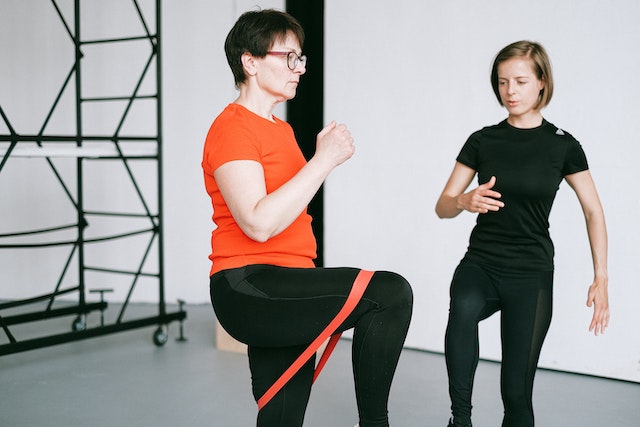
Physical Therapy Rehabilitation After Surgery: Techniques & Timeline
Notes on PT Assistive Devices
Physical therapy initially includes techniques and modalities to reduce pain, inflammation and swelling post surgery as well as instruction on the use of any assistive devices like braces and crutches.
As a treating physical therapist, I have cared for many patients who come out of surgery and are missing education on how to use their assistive devices. Patients ask me questions after the fact when they should have been giving these instructions upon discharge. Some patients say they were not given them, some say it was minimal. If they were given any instructions or information immediately post surgery, there is also an issue with the patient being fully out of sedation in order to process and understand this information which could be one of the reasons why some patients come out of surgery with this experience.
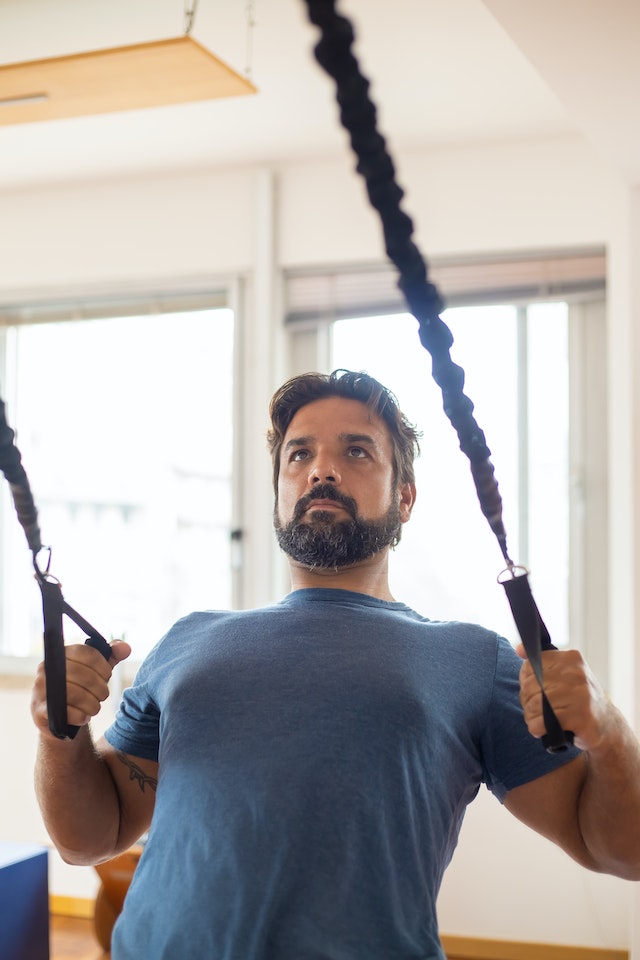 Strength Training
Strength Training
Physical therapy continues with exercises typically progressed from isolated muscle activation to functional kinetic chain movements. Activation, stability, strength, conditioning and flexibility exercises are performed to restore strength and extensibility of soft tissues. Exercises must be performed regularly in order for strength be restored.
The initial four to six weeks of any strength training program is neuromuscular in activation, which means that the brain body connection is being strengthened. When the brain sends the message to contract a muscle, it is done so through an electrical impulse down the nerve into the target muscle cell. That muscle cell is connected to a certain number of muscle fibers and during this initial phase, the muscle cell will recruit more and more muscle fibers until it is connected to all of them. This is neuromuscular in nature (the brain speaking with the muscles).
After this four to six week phase, the muscle tissue itself starts to gain strength and the muscle fibers will begin to hypertrophy or get bigger. So performance of the therapeutic exercises can take months to even years for the muscles to return to normal.
Treatment Plans
The treatment plan is the frequency and duration of physical therapy. Rehabilitation is required a minimum two times a week in order to effect change. There should be little to no ‘break’s during the treatment so that the patient’s progress does not regress. The patient must commit to their rehabilitation schedule as well as their home exercise program. Every physical therapist should be giving home exercises for the patient to perform on their non-therapy days. It is the combination of the two that help to progress and restore muscle strength and joint range of motion.
Physical Therapy Rehabilitation After Surgery: Conclusions
My experience with physical therapy has not been as consistent as it should have been, being the owner of a clinic and one who works in other areas in her field. I can speak from experience when I say between age, genetics, prior health status and regularity of a good comprehensive physical therapy program that if you fall behind, it is difficult to catch up. If you are older and were not as strong pre-surgery, it will be harder to recover muscle strength and endurance. If you are younger, it is much easier to bounce back. If your PT program is too slow or it is too limited, you will progress slower. If it is appropriately aggressive and robust, you should have a much easier time restoring your body to its pre functional, pain-free level.
Take it from me, listen to your physical therapist, commit and participate in your rehab program and use common sense when performing therapeutic exercises. It will minimize the regressions that can occur in PT and help make your recovery process more of a smooth and painless uptrending path.
Contact Dr. Wu at ActiveCare Physical Therapy in NYC
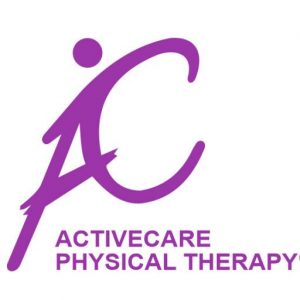 If you’re recovering from surgery and looking for a physical therapy practice in New York City, consider ActiveCare Physical Therapy®. With our convenient location in midtown Manhattan, we make it easy to get the care you need. Contact us today to schedule an appointment or learn more about our services. Let us help you get back to the activities you love with confidence and ease.
If you’re recovering from surgery and looking for a physical therapy practice in New York City, consider ActiveCare Physical Therapy®. With our convenient location in midtown Manhattan, we make it easy to get the care you need. Contact us today to schedule an appointment or learn more about our services. Let us help you get back to the activities you love with confidence and ease.
ActiveCare Physical Therapy®
29 West 38th Street, Suite 601
New York, NY 10018
Phone: (212) 777-4374
Email: staff@bestptnyc.com
Website: https://activecarephysicaltherapy.com/
Rehabilitation After Stroke: Physical Therapy for Recovery
A stroke is a serious medical condition that occurs when blood flow to the brain is disrupted, often leading to brain damage and physical impairment. Physical therapy can play a critical role in stroke rehabilitation, helping patients regain function and improve their quality of life. In this post, we’ll discuss how physical therapy can help in stroke recovery and the techniques used by physical therapists.
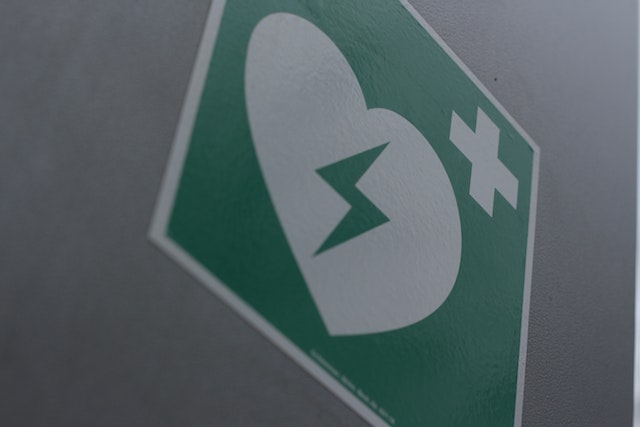
The Role of Physical Therapy in Stroke Rehabilitation
Physical therapy is an essential part of stroke rehabilitation. After a stroke, patients may experience a wide range of physical impairments, such as paralysis, muscle weakness, and loss of balance. Physical therapists can help patients regain function and improve their ability to perform daily activities.
Physical therapy typically begins soon after the stroke, often while the patient is still in the hospital. During the early stages of rehabilitation, the focus is on preventing complications such as blood clots and pneumonia. As the patient progresses, the physical therapist will work with them to improve strength, flexibility, and mobility.
Physical Therapy Techniques for Stroke Rehabilitation
Physical therapists use a variety of techniques to help patients recover after a stroke. Here are some of the most common techniques used:
1. Range of Motion Exercises
Range of motion exercises are designed to improve flexibility and mobility in the affected limbs. These exercises may involve gentle stretching and movements that gradually increase in intensity as the patient progresses.
2. Strengthening Exercises
Strengthening exercises help build muscle strength in the affected limbs and surrounding muscles. These exercises may involve the use of resistance bands, weights, or other equipment. Strengthening exercises are important for improving overall function and preventing future injuries.
3. Balance and Coordination Training
After a stroke, patients may experience problems with balance and coordination. Physical therapists can help patients improve their balance and coordination through exercises and techniques designed to improve stability and coordination.
4. Gait Training
Gait training involves exercises and techniques designed to improve the patient’s ability to walk. Physical therapists may use specialized equipment such as parallel bars, walkers, or canes to help patients improve their gait and balance.
5. Functional Training
Functional training involves exercises and techniques that help patients improve their ability to perform daily activities, such as dressing, bathing, and cooking. Physical therapists may use activities that simulate real-life situations to help patients regain function and independence.
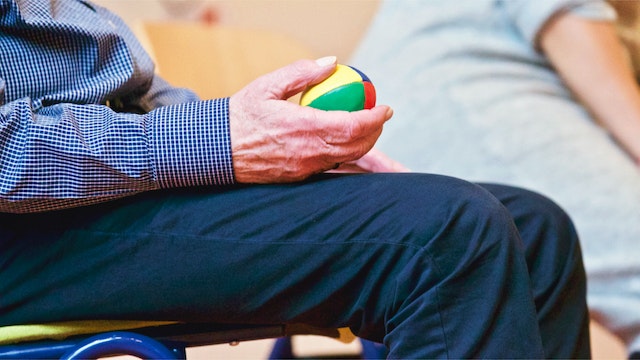
Why Choose ActiveCare Physical Therapy™ for Stroke Rehabilitation?
At ActiveCare Physical Therapy™, we understand the challenges of stroke recovery and the critical role that physical therapy plays in the rehabilitation process. Led by Karena Wu PT, a board-certified clinical specialist in orthopedic physical therapy, our team of physical therapists has extensive experience in treating patients after a stroke.
We take a personalized approach to treatment, working closely with each patient to develop a customized plan that meets their specific needs and goals. We use the latest techniques and technology to ensure the best possible outcomes for our patients.
Rehabilitation After Stroke Physical Therapy: Conclusion
Stroke can be a life-changing event, but physical therapy can play a vital role in recovery. Physical therapists can help patients regain function, improve mobility, and increase their overall quality of life. If you or a loved one has experienced a stroke, consider working with a physical therapist to develop a personalized rehabilitation plan and achieve the best possible outcomes.
Contact ActiveCare Physical Therapy™ today to schedule an appointment or learn more about our services.
ActiveCare Physical Therapy™
29 West 38th Street, Suite 601
New York, NY 10018
Phone: (212) 777-4374
Email: staff@bestptnyc.com
Website: https://activecarephysicaltherapy.com/
Rehabilitation After Joint Replacement Surgery: Physical Therapy Techniques
In this post, we’ll discuss the role of physical therapy in joint replacement surgery rehabilitation and some of the techniques used by physical therapists. Joint replacement surgery is a common procedure used to treat conditions such as arthritis and joint injuries. While joint replacement surgery can help improve mobility and reduce pain, it also requires a period of rehabilitation to ensure a successful recovery.

The Role of Physical Therapy in Rehabilitation After Joint Replacement Surgery
Physical therapy is an essential component of joint replacement surgery rehabilitation. Physical therapists can help patients regain strength, mobility, and flexibility after surgery. They can also help patients manage pain and reduce the risk of complications.
Physical therapy typically begins shortly after surgery, usually within a few days. During the early stages of rehabilitation, the focus is on managing pain and preventing complications such as blood clots. As the patient progresses, the physical therapist will work with them to improve strength, flexibility, and mobility.
Physical Therapy Techniques for Joint Replacement Surgery Rehabilitation
Physical therapists use a wide range of techniques to help patients recover after joint replacement surgery. Here are some of the most common techniques used:
 1. Range of Motion Exercises
1. Range of Motion Exercises
Range of motion exercises are designed to improve flexibility and mobility in the affected joint. These exercises typically involve gentle stretching and movements that gradually increase in intensity as the patient progresses.
2. Strengthening Exercises
Strengthening exercises help build muscle strength in the affected joint and surrounding muscles. These exercises may involve the use of resistance bands, weights, or other equipment. Strengthening exercises are important for improving overall function and preventing future injuries.
3. Manual Therapy
Manual therapy involves hands-on techniques that physical therapists use to mobilize joints and soft tissues. Manual therapy can help reduce pain and improve mobility by loosening tight muscles and joints. Common manual therapy techniques used after joint replacement surgery include joint mobilization, soft tissue mobilization, and myofascial release.
4. Balance and Gait Training
After joint replacement surgery, patients may experience balance and gait problems. Physical therapists can help patients improve their balance and gait through exercises and techniques designed to improve coordination and stability.
5. Pain Management
Physical therapists can help patients manage pain after joint replacement surgery. This may involve the use of heat or cold therapy, electrical stimulation, or massage.
Why Choose ActiveCare Physical Therapy™ for Rehabilitation After Joint Replacement Surgery?
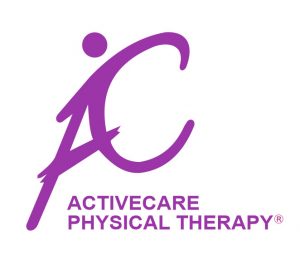 At ActiveCare Physical Therapy™, we understand the importance of physical therapy in joint replacement surgery rehabilitation. Led by Karena Wu PT, a board-certified clinical specialist in orthopedic physical therapy, our team of physical therapists has extensive experience in treating patients after joint replacement surgery.
At ActiveCare Physical Therapy™, we understand the importance of physical therapy in joint replacement surgery rehabilitation. Led by Karena Wu PT, a board-certified clinical specialist in orthopedic physical therapy, our team of physical therapists has extensive experience in treating patients after joint replacement surgery.
We take a personalized approach to treatment, working closely with each patient to develop a customized plan that meets their specific needs and goals. We use the latest techniques and technology to ensure the best possible outcomes for our patients.
Contact Us
If you’re recovering from joint replacement surgery and looking for a physical therapy practice in New York City, consider ActiveCare Physical Therapy™. Located in midtown Manhattan, we make it easy to get the care you need. Contact us today to schedule an appointment or learn more about our services.
ActiveCare Physical Therapy™
29 West 38th Street, Suite 601
New York, NY 10018
Phone: (212) 777-4374
Email: staff@bestptnyc.com
Website: https://activecarephysicaltherapy.com/
Rehabilitation Physical Therapists
If you are suffering from a serious injury, went through surgery, or had a stroke, your doctor might recommend a rehabilitation physical therapist so that you can recover. With rehabilitation therapy, you will experience a controlled medical environment that will help you recover from your condition. Moreover, you will be able to redevelop your strength, relearn the skills that you lost, or find a new way to perform various activities that might be difficult for you now.
Therapists and rehabilitation experts will help you recover from any physical changes that your injury caused, chronic disease, or medical conditions. There are various types of rehabilitation specialists, including occupational therapists, physical therapists, and speech therapists.
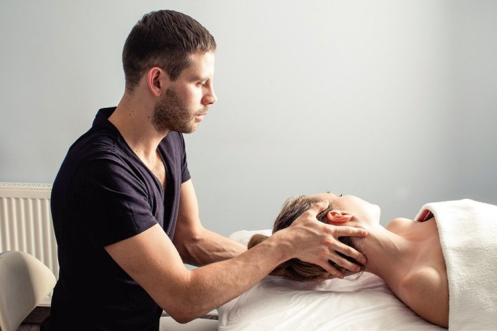
(Source)
1. Occupational Therapists
Occupational therapists will help you perform tasks that you need for every-day working and living. These therapists work with people who have mental, physical, or developmental disabilities. This includes patients who experienced a stroke and have lost functionality on one side of the body. Furthermore, patients who have lung or heart disease, breathing or activity limitations, suffer from diabetes, or amputees also need therapy. They help their clients to find a new way to work, eat, cook, or dress. They may visit their patients at their workplace or at their home so that they can find adaptive equipment or guide them to do things in new ways. Occupational therapists have a doctoral or master’s degree and earn licensing through their state.
You might be of any age to receive occupational therapy services. From newborns to seniors, all people require these therapists. Occupational therapists can help you in endless ways, such as:
- When you experience a painful brain injury and lose your cognitive function, you may require a therapist to assist you in tasks and activities such as applying for a job or submitting college applications.
- Children suffering from physical disabilities may require a therapist to help develop the coordination needed to eat, improve handwriting, and operate a computer.
- Adults suffering from depression can also visit a therapist so that they can re-engage in their daily tasks and maximize their chances to succeed in life.
- If a person loses the ability to grab a spoon because of an injury, they may consult a therapist to regain grip strength and adjust movements, ultimately being able to resume daily life tasks.
2. Physical Therapists (PTs)
Physical therapists help you when you have a disability, medical condition, or injury that limits your ability to function or even move. Physical therapists will test your ability to move and your strength. Then, they will create a treatment plan. The main focus of treatment is to restore function, reduce pain, improve mobility, or prevent any further disability from occurring. Physical Therapists also treat patients who had a stroke, amputation, chronic disease, or injury. To become a physical therapist, a person should have 2-years of masters or 3-year doctoral degree. They also need a license from the state. Common therapies of a physical therapist include:
- Pain management
- Balance and gait retraining
- Cardiovascular strengthening
- Special stretches and exercises designed to improve mobility, relieve pain or regain strength.
- Rehab and exercises so that you can learn how to use an artificial limb
- Splinting, burn care, casting, or using orthotics (splints or braces)
- Practicing the gadgets assisting in balance or movement, such as crutches, canes, wheelchairs, or walkers
- Heat or cold therapy, ultrasound, or massage to ease muscle spasms and pain

(Source)
3. Respiratory Therapists
Respiratory Therapists care and treat people with breathing problems. They help patients with all ages, starting from premature babies to older aged-people with lung disease, emphysema, or asthma. Respiratory therapists need a license in most states. Along with a license, they also need an associate’s degree; however, many respiratory therapists also have a bachelor’s degree.
4. Speech Therapists
These types of therapists are also known as speech-language pathologists. They help patients who are unable to speak, communicate, or swallow properly. Such problems are mostly the result of cancer, brain injury, or a stroke. Speech therapists construct a program based on each of their patients. If a patient could not speak, the therapist may guide them to communicate through sign language, communication devices, and any other methods. For people who are unable to swallow, they teach them to strengthen their muscles or a different way to swallow liquids and food without choking. Speech therapists require a master’s degree and a license from their state.
Rehabilitation Physical Therapist: Conclusion
If you are looking for rehabilitation therapists and require a rehabilitation program to recover from a condition or disability, call our clinic at (212) 777-4374. You can also visit our website for more information.
We have the best professional therapists who are available to help you with most common injuries and conditions, such as hip, neck or back pain, and any disability. They are ready to understand your problems and design a program to improve your health and daily life activities.
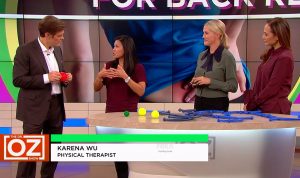 ActiveCare Physical Therapy, PC
ActiveCare Physical Therapy, PC
29 West 38th Street
Suite 601
New York, NY 10018

